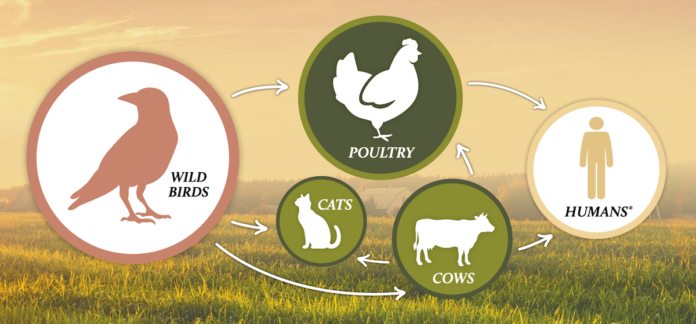Avian influenza, commonly known as bird flu, has become a major concern in the United States due to the outbreak of the H5N1 strain, which arrived from Europe and Asia in 2022. This strain, classified as highly pathogenic avian influenza (HPAI), is extremely contagious, deadly, and has the potential to wipe out entire flocks within days. In addition to affecting birds, the H5N1 outbreak has also expanded to mammals globally, including domestic and large cats, foxes, polar bears, raccoons, marine animals such as dolphins and seals, and livestock like dairy cattle. As of January 20, there have been 67 human cases in the U.S., primarily caused by contact with infected birds or dairy cattle.
Dr. Andy Bowman from Ohio State University’s College of Veterinary Medicine described the current situation as “truly unprecedented” due to the introduction of infection in many new species. This has raised concerns among researchers about the virus’s ability to mutate and reassort, potentially leading to more severe human infections in the future. However, vigilant biosecurity practices can help prevent the spread of the virus to people and other species.
The U.S. Department of Agriculture reported that more than 130 million birds in commercial and backyard flocks across all 50 states have died from H5N1 or been destroyed since February 2022. One surprising development was the detection of the virus in dairy cows in March 2024, with 929 confirmed cases in dairy herds in 16 states, including Ohio and Michigan.
Influenza is a broad term for several viruses, with influenza A being the cause of avian influenza. The virulent form of influenza A has been responsible for serious flu outbreaks in the past, including the 1918 pandemic and the 2009 pandemic. Pigs, in particular, are a mixing vessel for influenza, as they can be infected with several types of the virus and serve as a bridge for transmission to humans.
Reassortment, a process where different viruses combine to create a new subtype, can lead to the emergence of more pathogenic and easily transmissible viruses. The 2009 H1N1 flu pandemic is believed to have reassorted from swine and caused severe respiratory disease in young adults and children.
Protecting flocks, herds, and humans from avian influenza is a top priority, with states like Pennsylvania implementing aggressive measures to prevent infections. Mandatory bulk testing of milk and enhanced biosecurity protocols have been put in place to detect and contain the spread of the virus. In Ohio, commercial flocks have been on high alert, with recommendations from state veterinarians to follow USDA guidelines, especially regarding personal protective equipment.
Biosecurity measures are crucial in preventing the spread of avian influenza, with recommendations such as keeping birds indoors, avoiding contact with wild birds, and maintaining strict hygiene practices. Enhanced protocols, including dedicated footwear for barn visits and restricting access to external personnel, can help reduce the risk of transmission. Additionally, regular handwashing, changing clothes, and thorough cleaning of equipment are essential to prevent the spread of the virus.
In conclusion, the current outbreak of H5N1 avian influenza poses a significant threat to both animal and human health. By implementing strict biosecurity measures, early detection strategies, and following recommended guidelines, the spread of the virus can be minimized, protecting flocks, herds, and humans from the devastating effects of avian influenza.



